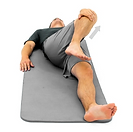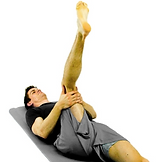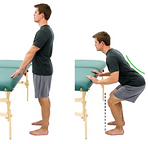"5 Exercises To Protect You Against 'Seasonal Sciatica'"

It’s around this time of year where we start to hear a lot of people complain of back pain and sciatica – and it’s no coincidence. Just like how bad allergies peak in the Spring, so does sciatica. Only, we can’t blame the pollen and ragweed. What happens in the Spring is the nicer weather starts to draw people out of their Winter hibernation. All Winter they watched their garden beds slowly wilt away, the home projects piled up, or they put off exercising until the weather got nice again. While it’s a great to feel productive tackling the weeds, cleaning out the closets, and getting your health back on track, the problem is that people want to go from zero to a hundred without anything in the middle.
Even though it may not seem like much, your body can experience a “shock” from starting an activity without proper preparation. That’s why back pain and sciatica are so prevalent this time of year. In the colder months, you’re doing much more sitting and when the weather gets nicer, that’s it – boom – you’re raking leaves, re-mulching, pressure washing, and walking on the levee. Before you realize it, your back is aching, you’ve got pain radiating into your leg and you’re left scratching your head as to why? You thought it was good to be more active.
We’ve already had a few gorgeous weekends in New Orleans so this could already be hitting home for a few of you. If that’s the case, let’s talk. There is too much to look forward to for you to miss out on with a sore back. The sooner you get help, the sooner these problems clear up and you get the tools to successfully fight it off from coming back again.
For those who are flirting with back pain and sciatica, there is still hope! Before you go out and tackle your next big project, try these five exercises to protect yourself from “Seasonal Sciatica”.





These exercises are in no way meant to treat or solve any medical diagnosis you may have. Should you experience pain with any of these exercises, please discontinue and speak with your healthcare provider.
